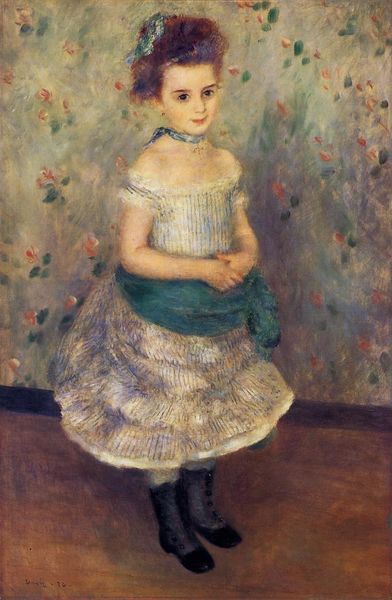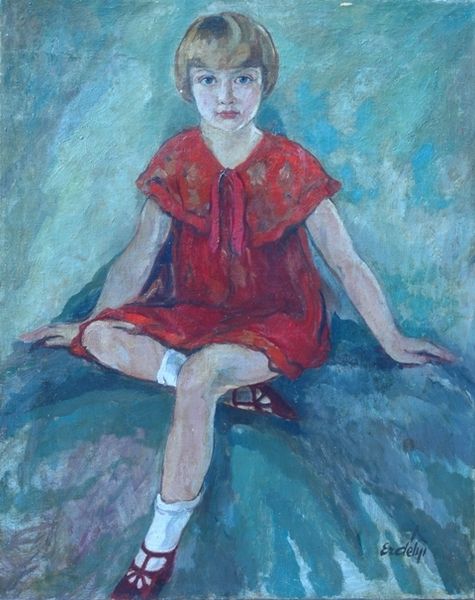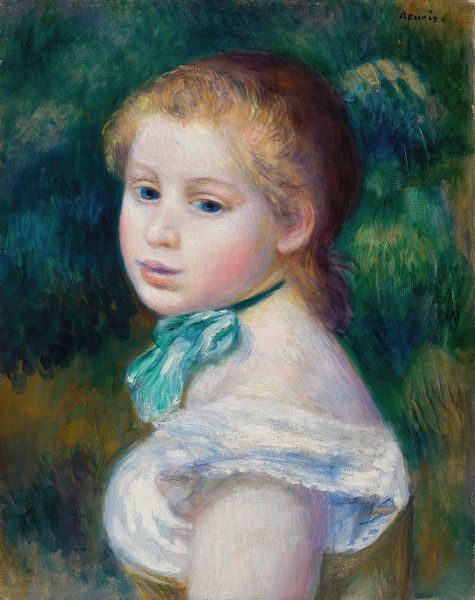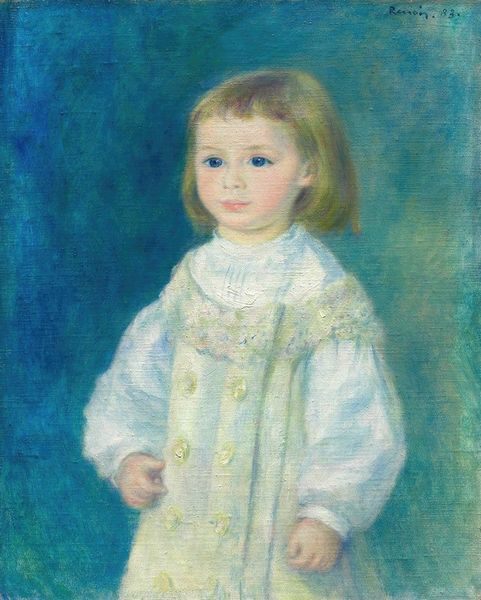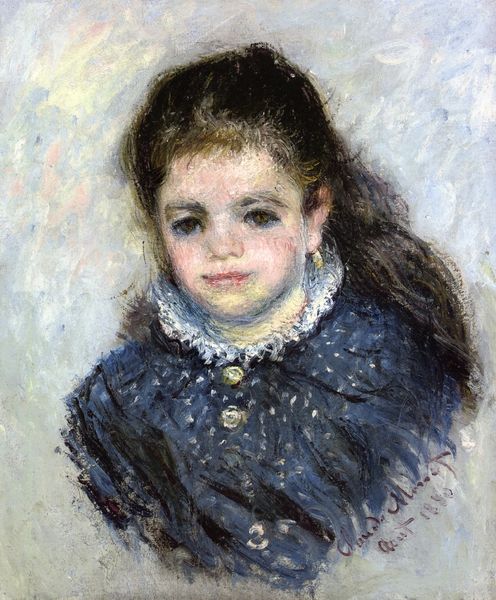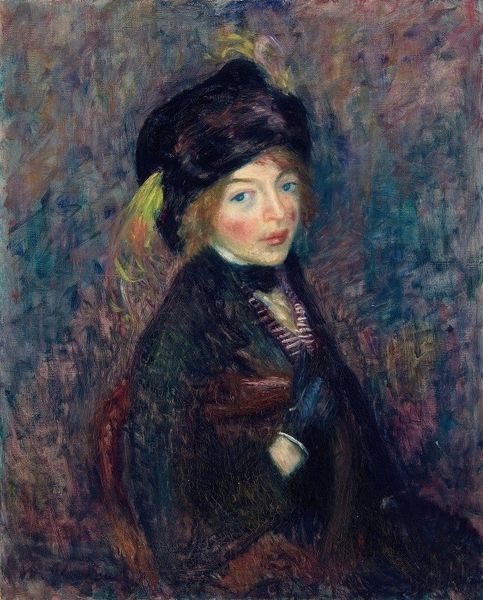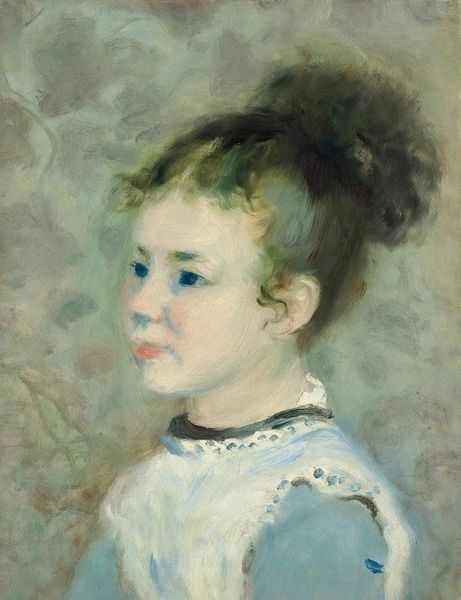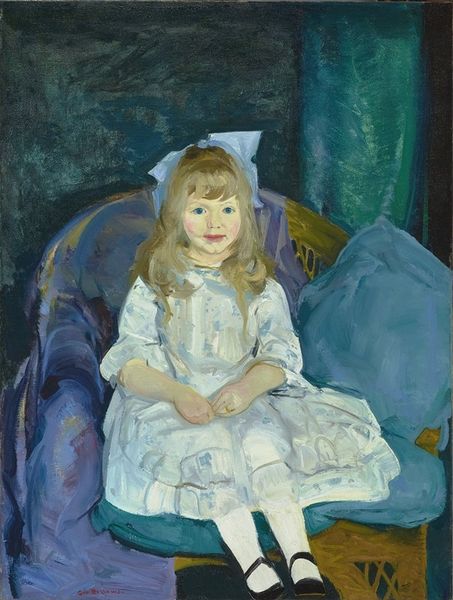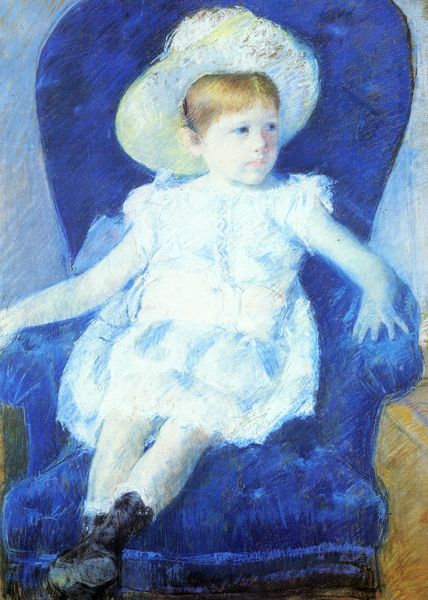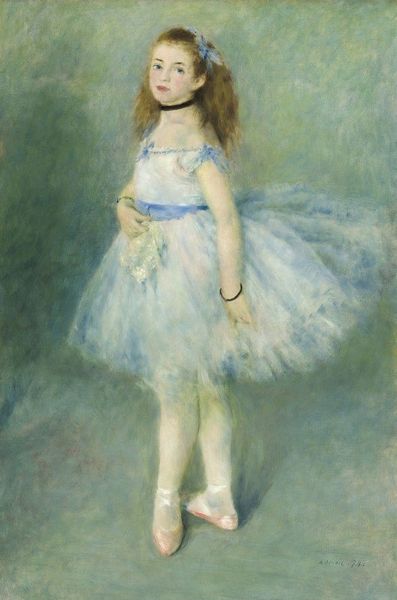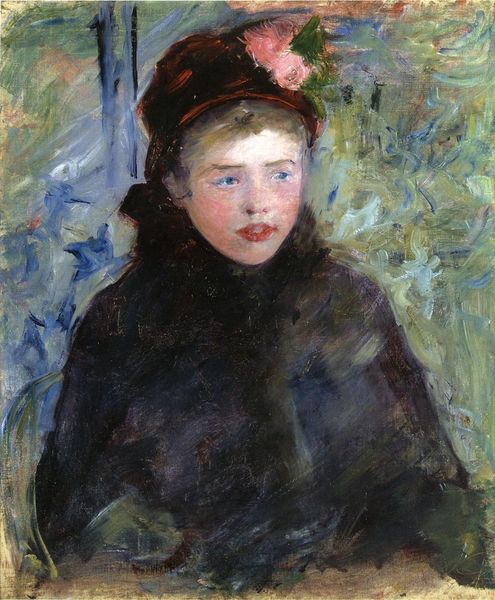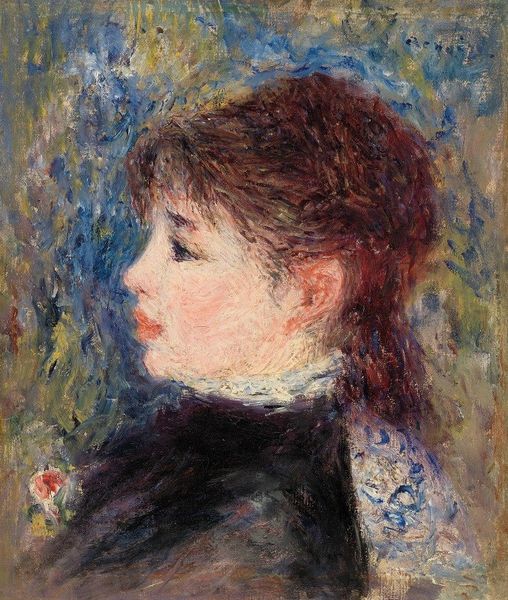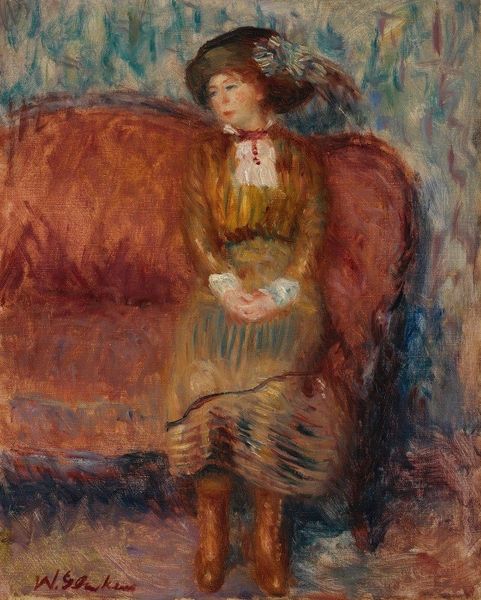
painting, oil-paint
#
portrait
#
figurative
#
painting
#
impressionism
#
oil-paint
#
oil painting
#
genre-painting
Copyright: Public Domain: Artvee
Editor: Here we have Renoir's "Girl with a Jump Rope," created in 1876 using oil paint. I am really drawn to the almost fleeting depiction of childhood. How would you interpret it? Curator: The focus on the "fleeting," as you call it, directs us towards understanding Impressionism not merely as visual style, but as a representation of specific socioeconomic conditions. Observe Renoir's application of paint – those visible brushstrokes weren't just aesthetic choices. They were enabled by industrial production making pre-mixed paint in tubes available for easy portability and faster painting, shifting art production outside, and away from ateliers. Editor: So, the materials themselves impacted the art? Curator: Absolutely. Mass production touched the canvas itself. Note also the girl’s dress – likely factory-made fabric and details like the bow. Renoir is not just depicting a girl but engaging with how industrial production shaped even leisure activities. Editor: That is interesting. So this jump rope becomes not just a childhood toy, but also linked to material culture and its transformations? Curator: Precisely. He acknowledges a shifting social reality shaped by new production means, capturing a subject directly impacted by these transformations in both her dress and leisure. This highlights that leisure becomes more associated with a consumer based society. Editor: That shifts my perspective. Now I see how Renoir engaged in broader ideas by simply depicting a child playing, embedding modern advancements and labor within everyday life. Curator: Exactly, by showing the artwork to you like this helps illuminate it as more than merely visual or subjective.
Comments
No comments
Be the first to comment and join the conversation on the ultimate creative platform.
